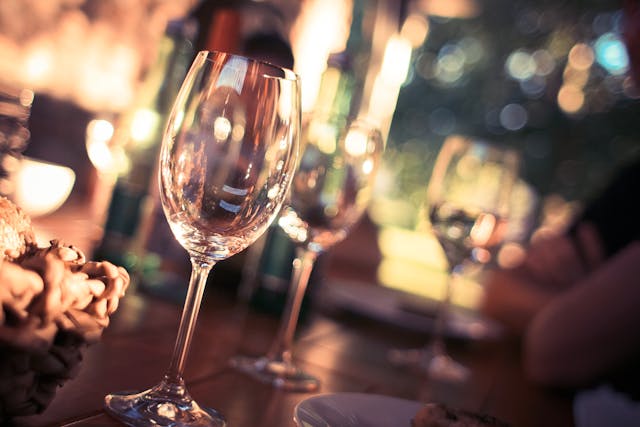Choosing the right wine glass is crucial to enhancing your wine tasting experience, as different wine glass shapes, materials and sizes will affect the aroma, taste and visual presentation of the wine. Here are some tips to help you make a better choice when choosing a wine glass:
Understand the basic types of wine glasses
There are many types of wine glasses, but they can be roughly divided into the following categories:
Red wine glass:
Bordeaux glass: suitable for heavy-bodied red wines with strong tannins, such as wines from the Bordeaux region. The cup body is longer and the opening is larger, which is conducive to the full dispersion of aroma and increases the contact area between wine and oxygen.
Burgundy glass: suitable for red wines with light body and astringent aroma, such as wines from the Burgundy region. The cup body is wide and has a large diameter, which is conducive to gathering the aroma and slowly oxidizing it when exposed to air.
White wine glass: Usually the cup is smaller and the narrow body helps to maintain the fresh taste of white wine while slowing down the aroma dispersion and oxidation.
Sparkling wine glasses: such as tulip glasses and flute glasses, suitable for sparkling wines such as champagne. These wine glasses are designed to slow down the rise of bubbles, allowing them to last longer while concentrating aromas.
Dessert wine glass: The cup is smaller and has a narrow mouth. It is suitable for fortified wines (such as sherry, port) and dessert wines to reduce alcohol evaporation and concentrate the aroma.
Spirit glasses: Small-diameter glasses are suitable for spirits, such as tequila, brandy, etc., to retain their strong aroma.
Consider materials and transparency
Material: Common wine glass materials include glass, crystal and stainless steel.
Glass: Smooth and transparent, making it easy to observe the color and texture of the wine. It is the first choice for most wine tasting occasions.
Crystal: High light transmittance and crystal clear, which can enhance the taste, but the price is usually higher.
Stainless steel: durable and suitable for outdoor use, but not as transparent as glass or crystal and not suitable for observing wine.
Transparency: A good wine glass should have high transparency, so that the color of the wine can be restored more clearly, and it also means that the glass material is high-quality and well-made.
Consider shape and size
Shape: Different wine glass shapes are suitable for different types of wine and can affect the aroma and taste of the wine. For example, a Burgundy glass with a big belly is conducive to gathering aroma, while the long body and opening of a Bordeaux glass are conducive to aroma dispersion.
Size: The capacity of the wine glass also needs to be considered. For red wine, it is generally recommended to choose a wine glass with a larger capacity (but not exceeding 300ml) so that there is enough space for shaking the glass and sobering up; while white wine glasses are relatively small. Sparkling wine glasses are usually slender to keep the bubbles alive.
Choose reliable brands and merchants
The quality of wine glass products on the market varies. It is recommended to choose well-known brands and reputable merchants to ensure the quality and use experience of wine glasses.
Personal preferences and occasions
Finally, choosing a wine glass also depends on personal preference and the occasion. In formal banquets, larger wine glasses are generally used; while at tastings, small and cheap wine glasses may be chosen to save space and wine.
To sum up, choosing the right wine glass requires comprehensive consideration of factors such as the type, material, transparency, shape and size of the wine glass, as well as personal preferences and occasions. With reasonable choices, you can better enhance your wine tasting experience and enjoy the pleasure brought by fine wine.

